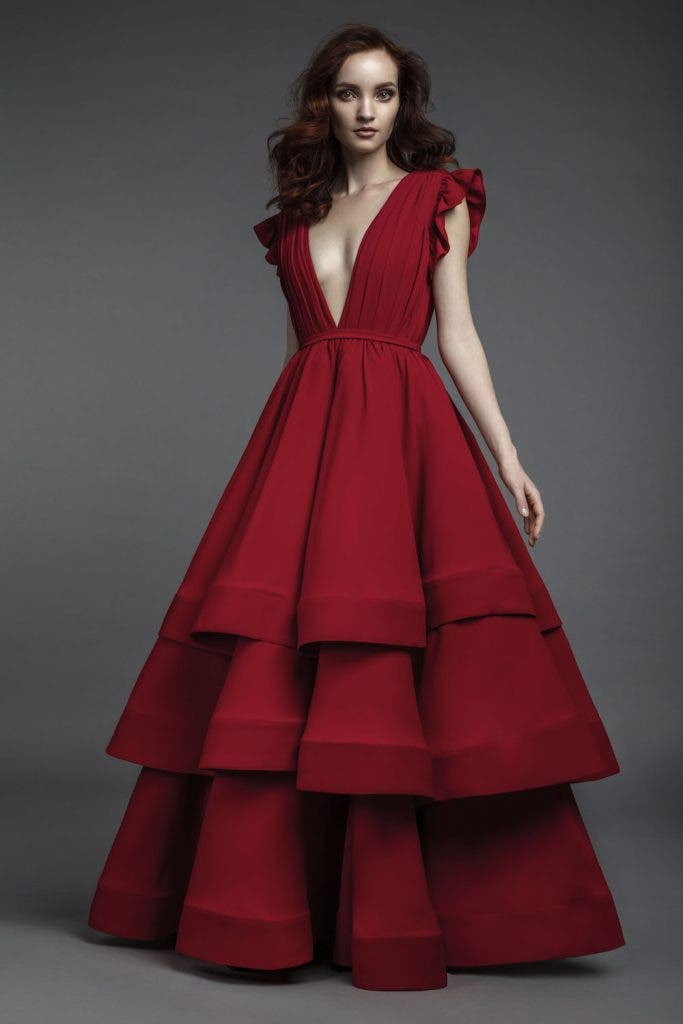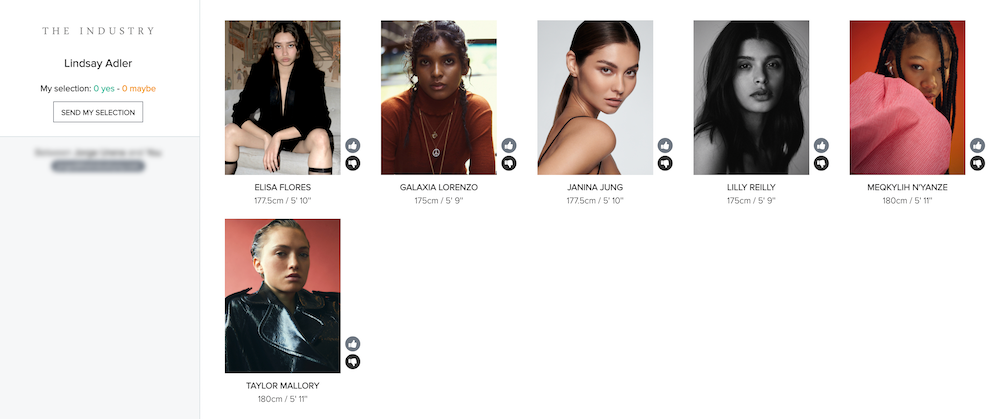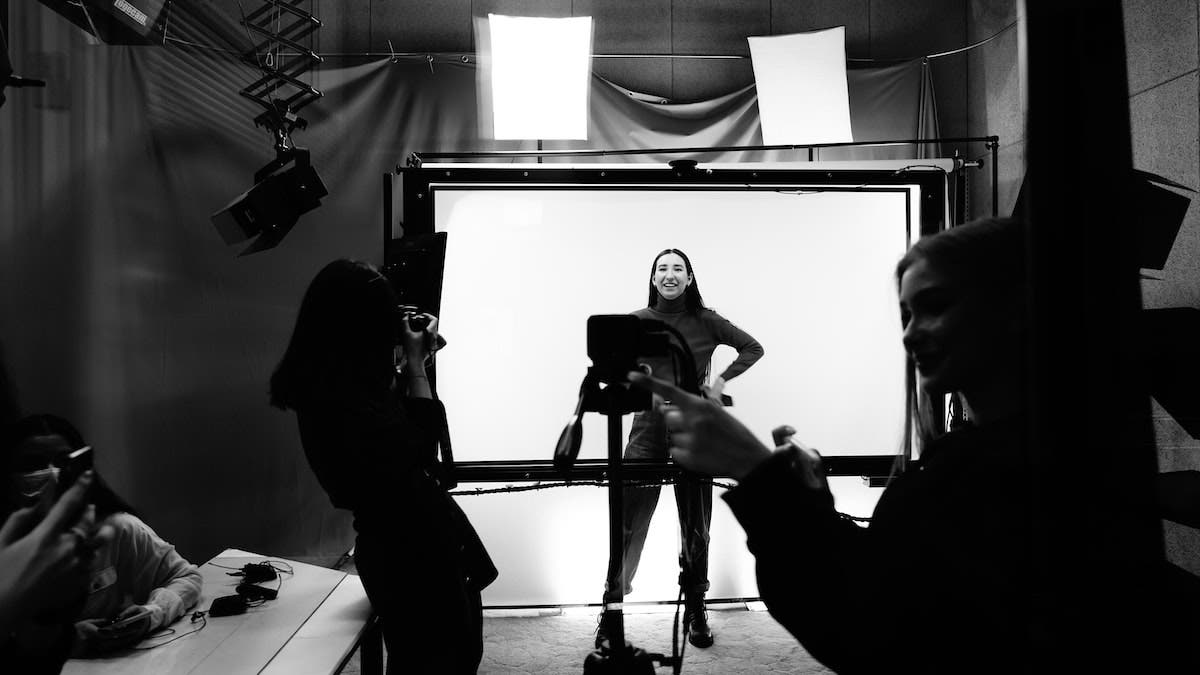When I first got started in the fashion photography industry, there were more than a few instances where I felt left out or a bit amateur because I didn’t know the fashion photography lingo.
Does it make you a better photographer to know the correct terms? No, of course not. Although, it does help you communicate with others in the industry. Lingo can be a gatekeeping tool to weed out those who are “outside” the industry… but I want to let you in! Let’s take a look at the most important fashion photography lingo and terms to understand.
Call Sheet
A call sheet is an overview of all the shoot’s details sent out before the shoot day. It includes the location of the shoot, the contact info for the creatives and clients involved in a shoot, as well as the call and wrap times. A call time is when individuals should arrive at a shoot, and the wrap time is when their time on set ends. On bigger shoots, call times are staggered based upon a person’s job.
I try to send out a rough call sheet a day or two before the shoot. I then send another the evening before shoot day as a reminder to keep it in the top of people’s emails.

Mood Board
A mood board is a collection of images used to communicate the direction of the shoot with your creative team, publication, or clients. This acts as your visual road map for the shoot to provide references of what you are trying to achieve. These images do not have to be your own, but instead can be sourced from books, Pinterest, Instagram, magazines, etc.
You can choose to include a few photos for the overall “vibe’ of a shoot, and then get specific with clothing references, hair and makeup inspiration, and more. For editorial jobs, I find the reference can be a bit more vague. But for commercial jobs, you should plan out every look.
Mood boards can be created in Photoshop or any simple layout program. I often use Canva, which is a free graphic design website.

For more on this subject, check out Why a Photoshoot Moodboard Is Important.
Pull Letter
A pull letter is provided by a publication to help a wardrobe stylist borrow clothing from different designers and showrooms. A pull letter will usually name the photographer, wardrobe stylist, and any relevant details about the shoot. This letter is letting the brand or company know where and when the images will be published. This way, the designer/showroom can decide if they want to be involved and what clothing pieces are available.
A limited number of publications will provide a Letter of Responsibility (LoR). This means they take financial responsibility for the clothing if something is stolen or damaged. As a photographer, you may interact with a designer who asks for a LoR to protect them if something happens to their pieces.
Test Shoot
A test shoot is an unpaid shoot where the entire team is working collaboratively to test out a concept, or to build their portfolio. The idea is that everyone on the shoot works for “trade.” This means they are working for the resulting images that they can then use for their website, social media, or self promotion.
If you reach out to an agency looking for models for a test, the implication is that you will not be paying the models. The agency may ask if there is a rate for the shoot… and that is up to you. Typically you will reference the number of retouched images you will provide in exchange for the model’s time.
Camera Ready
Camera ready means the model will arrive with hair and makeup done – also known as “ready to shoot.” This is usually appropriate if you are doing a test shoot or something with no budget. Conversely, you can also direct the model to come “clean clean.” This means they should arrive with no product on their face or hair, and that you will provide the hair and makeup artists for the shoot day.
Editorial / Tear Sheet
A fashion editorial is a series of images that usually tells a visual story, and is showcased in a magazine. Editorials are often unpaid (99 percent of smaller or mid-sized magazines) or created for a rate much lower than commercial standards. The compensation for the shoot day are the resulting tear sheets.
A tear sheet is an actual page from the magazine or other job that shows the model’s work in print. Tear sheets are often included in the back of a model’s portfolio or on a photographer’s website. Tear sheets can also be delivered as PDFs, particularly for international or online publications.
When images are published in an editorial, they are treated as self-promotion and a way to stay on top of relevant trends.

Look Book
A look book shoot showcases a designer’s most recent collection or line of clothing for the season. These images are used on websites as well as sent to fashion editors and potential buyers to show the clothing. Typically, in the past, these images were “no frills” and a bit more catalog-like with views of the clothing from the front, side, and back. In more recent years,, there has been some creativity introduced for branding while still showing off the clothing.

Booker / Booking Agent
The booking agent is the person at the agency who helps to manage a model’s schedule, invoicing, bookings, and more. Agencies often have different bookers for different “boards,” or categories of models. For example, there could be a booker in charge of men, one for new faces, and one for fitness models.
Model Package
When an agency sends you a model package, they are sending you a digital gallery of models you can select for your shoot. This could be for a test shoot or a paid commercial project. It will have each of the model’s measurements, digitals, and a selection of images from their portfolios.

Digitals / Polaroids
Digitals, or polaroids, are meant to showcase the subject as a canvas. They are straightforward with no retouching, minimal hair and makeup, and super simple styling. In the past, these were done with a polaroid camera (hence “polaroids”). Now, they are usually taken with a phone (hence “digitals”). They are typically shot against a plain background with simple natural light. They show the subject from the front, each side, and a three-quarters shot.
Casting / Go-See
When models show up to “interview” for a job, this is a casting. The idea is that you get to see the model in person before booking them on a shoot. This often involves a couple of basic shots or poses. Nowadays, castings can be done in person or virtually. This is a great opportunity to see how a subject moves, their skin without retouching, and how they interact with the camera. This is extremely important before booking them on a paid commercial job.
A go-see is like a casting, but doesn’t necessarily have to be for a specific job. It could be just to interact with models so you have an idea of who you may want to work with for upcoming editorials, tests, or commercial shoots.
Agency Fee
The agency fee is the additional percentage a model agency takes on top of the model’s rate. There is typically a day rate provided for up to an eight-hour day, and then usually an additional 20 percent fee on top of that paid to the agent. When you are providing a rate for a job, be sure to clarify if the rate is “plus agency fee” or “inclusive of agency fee.”
New Faces / Development Models
New faces are models that are newer to an agency or have less experience. They are placed in this category as the agency helps to develop their portfolio and career. Typically, these models are more likely available for test shoots or perhaps lower rates when budgets are tight. This doesn’t mean they are a bad model. It just means they are learning.
At times, an agency may choose to rebrand a model — perhaps moving them more toward commercial or editorial — and they may briefly be moved back to the development stage.
Voucher / Billing Form
At the end of a shoot, a model may ask you to sign a voucher. It summarizes the hours and rate of a shoot. It’s basically an approved invoice that the model will then provide to her agency, so the agency can then properly bill you. Some agencies require a voucher from each model and others do not. But it is very useful if there is overtime so you can approve the time and rate.

Front of Book / Comp Card Shot
A comp card is like a business card for models — only bigger. It’s usually somewhere in the 5.5 x 8.5 inch size and contains the model’s measurements, agency, and other relevant details.
There tends to be one lead shot on the front of the comp card, which is usually the image that starts a model’s portfolio. This is why it is also called a front of book image.

More often than not, comp card images are simple — clean lighting, simple hair and makeup. It is meant to show the model as a canvas and create connection with the viewer, rather than showing off a particular hair and makeup look.
Any time I do a test shoot with a model, I start off with a front of book shot to help provide images that are helpful to the model and agent before I experiment with my other techniques.
Learn More
I hope you’ve enjoyed this breakdown of the essential fashion photography lingo. If you are interested in fashion photography, you can join me in one of my fashion intensive workshops or by watching my videos on Adorama TV.






